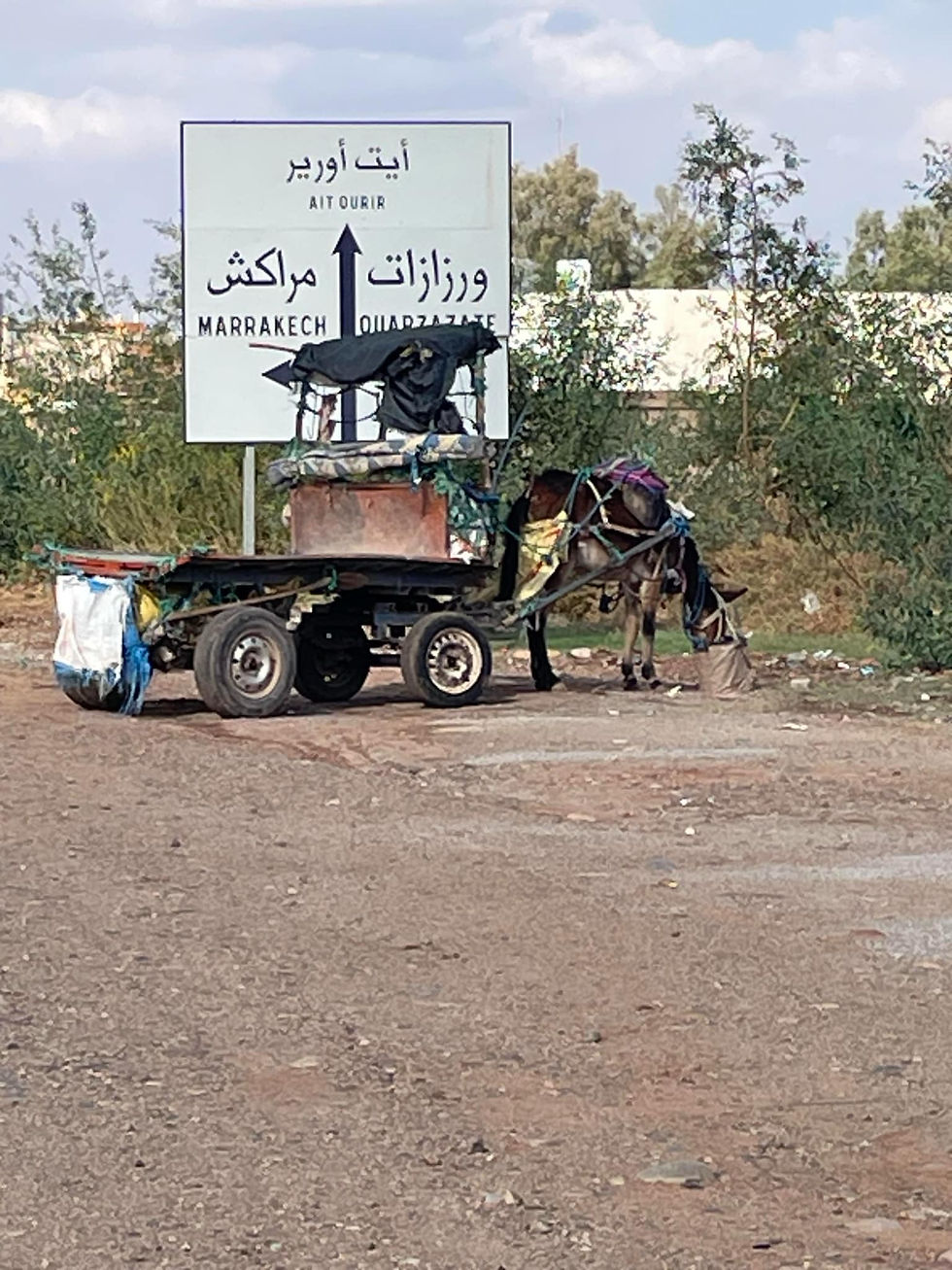Mules in Morocco
- Mules Qui peut
- Dec 2, 2024
- 3 min read
And in North Africa

Mules: pillars of rural and mountain life in Morocco
Au Maroc, notamment dans les régions rurales et montagneuses, les mules jouent un rôle essentiel depuis des siècles. Leur robustesse, leur endurance et leur capacité à naviguer sur des terrains escarpés, comme ceux des montagnes de l'Atlas, en font des alliées indispensables pour les habitants.
Ce sont généralement des hybridations de juments barbes ou arabes
The multiple uses of mules in Morocco:
1. Transport of goods In areas where roads are impassable for vehicles, mules are the preferred means of transport. They carry foodstuffs, building materials, and even water, crossing paths inaccessible to machines.

2. Farm work: Mules actively participate in field work, whether it is plowing, transporting crops or moving equipment necessary for farming.
3. Tourism: In regions such as the Atlas, Chefchaouen or the Dadès Gorges, mules are also rented to tourists for nature hikes, allowing access to otherwise inaccessible places.

4. Society and Culture: In many rural communities, owning a mule is a sign of prosperity. They are seen as a status symbol and a vital tool for families.

Challenges to be met:
Despite their importance, mules can sometimes be overworked or mistreated, especially in tourist areas or where care practices are not always adequate. Fortunately, local and international NGOs are working to raise awareness of the specific needs of these animals and improve their living conditions.
Jarjeer is working in this direction, links at the end of the page
An economic pillar:
Mules represent an important economic value in the animal trade in Morocco. Their rarity, as sterile hybrids between the donkey and the mare, makes them valuable to rural families. They are particularly appreciated in the mountains, where they are often better cared for than in urban areas.
Ville vs montagne :

In the city, the horses work hard, sometimes to the point of exhaustion, and can be seen at night, tied to carts with little water and food. However, in the mountains, where the inhabitants really depend on their animals, they provide them with more attentive care. Mules, although less known than the Arabian horses famous for the Tbourida, are here recognized for their strength and endurance.
Practices surrounding equine care in Morocco: diverse realities
In Morocco, equine care methods vary widely depending on the region and the resources available. In many cases, farriers are self-taught, learning on the job and adapting their practices according to their knowledge. This reflects a reality: everyone does what they can with the resources they have. The same is true for education
Foals, from a very young age, are often exposed to daily life alongside their mothers, even in the middle of road traffic. This lifestyle is sometimes the only way for them to learn to adapt to their environment.

In general, those who truly depend on their animals do their best to care for them, even with limited means. However, it must be acknowledged that veterinarians are rare in some areas, and for poor families, it is often impossible to afford a consultation. In these cases, they must turn to more accessible solutions.
In cities, the situation is different. The living conditions of equines can be more difficult, with animals often working long hours and sometimes left to their own devices at night, tied to carts, with only a little water and food, or free-ranging, feeding on scraps found in garbage cans
The Jarjeer shelter works tirelessly to rescue animals from truly abominable situations, misery, climate and profit are the cause
Thanks to Nathalie Leplang, living on site, for her help in writing this post










Comments